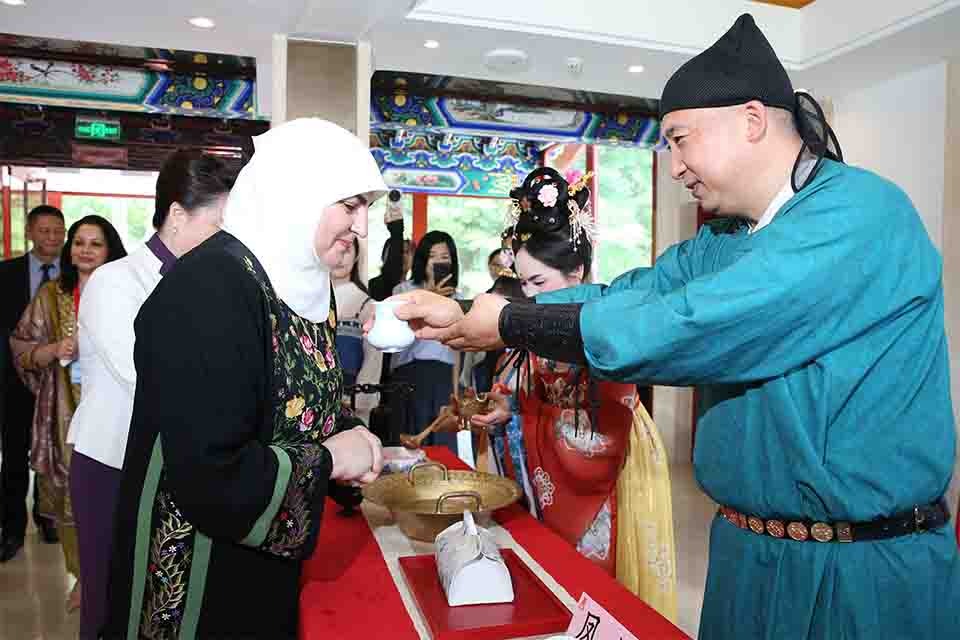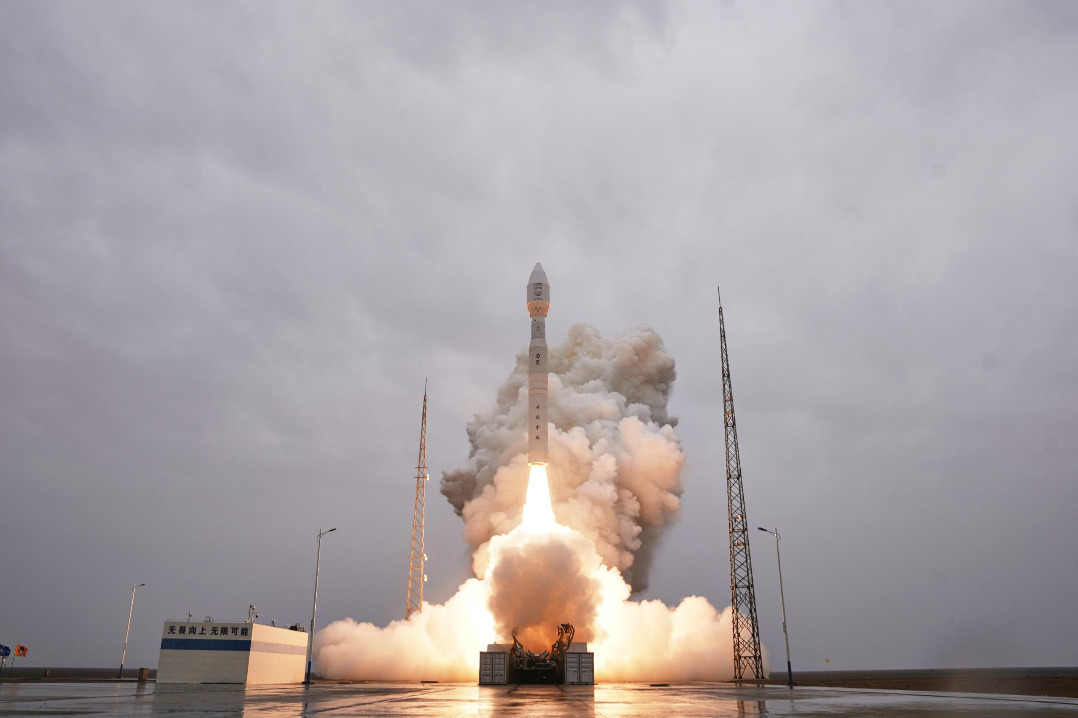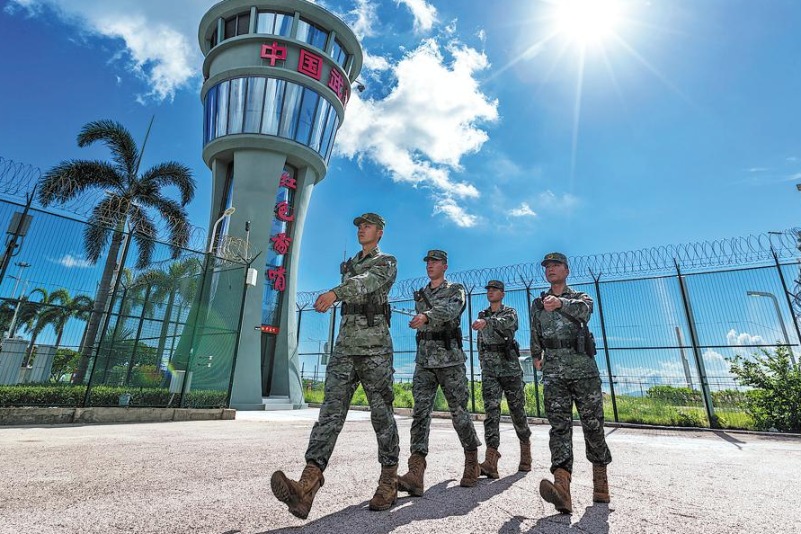Chang'e 5 lunar probe gathering moon samples

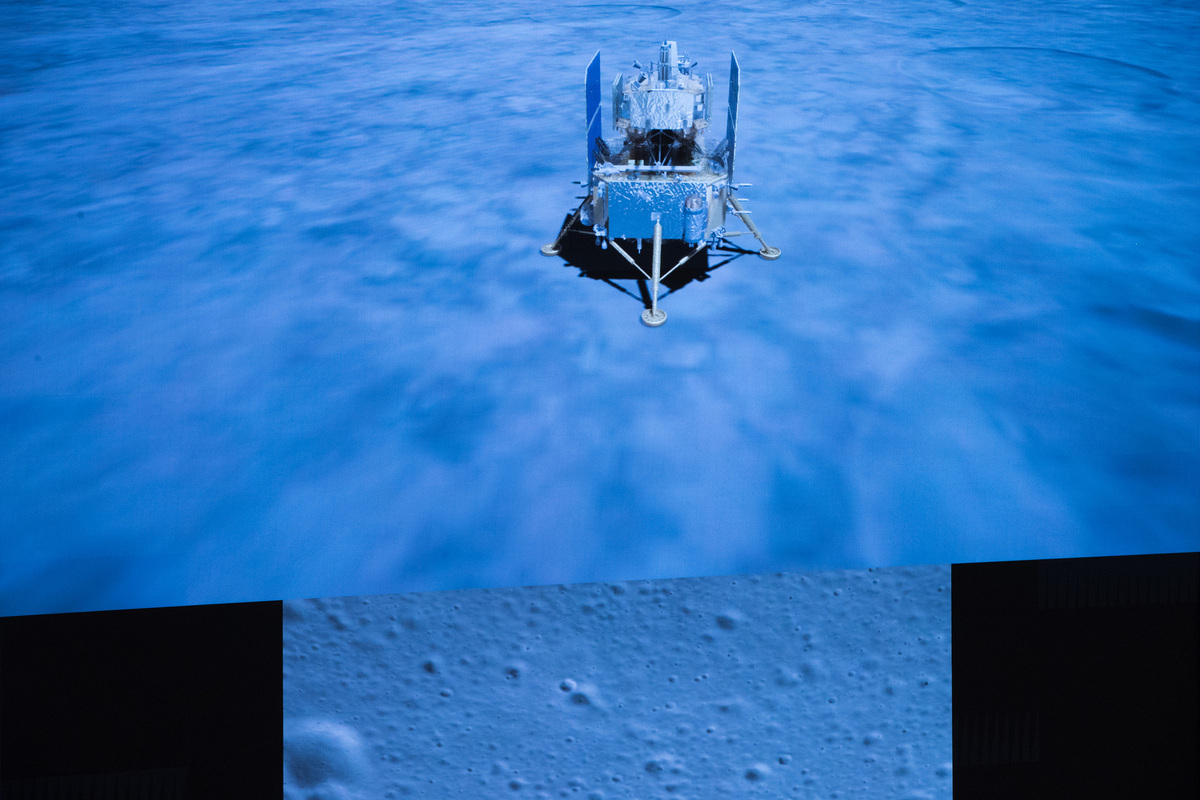
Related: Chang'e 5 lands on moon, starts surface operations
The lander-ascender combination of China's Chang'e 5 robotic lunar probe has finished gathering subsurface samples and packed them in a vacuum container while continuing to collect surface substances, the China National Space Administration said in a statement on Wednesday.
The processes of drilling for and packing rocks and soil from 2 meters beneath the lunar surface finished at 4:53 am, the administration said, and the mechanical arm was still gathering surface samples.
The combination touched down on the moon at 11:11 pm on Tuesday, becoming the third spacecraft to successfully land on the lunar surface this century. The first two-Chang'e 3 and 4-were also from China.
If everything goes according to plan, the lander-ascender pair will work for about two days in a region north of Mons Ruemker, a mountain overlooking a vast lunar mare called Oceanus Procellarum, or the Ocean of Storms, on the western edge of the moon's near side. It is tasked with collecting about 2 kilograms of samples.
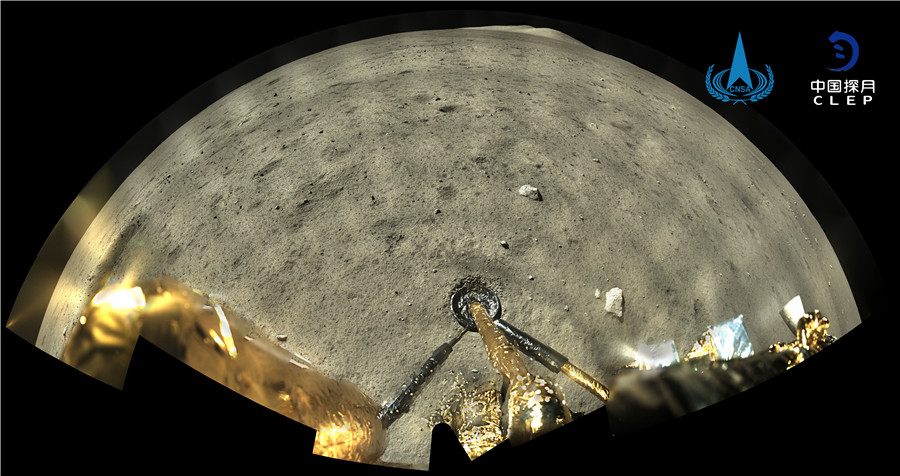
Peng Jing, deputy chief designer of Chang'e 5 at the China Academy of Space Technology, said engineers installed two types of collection devices on the probe in hopes of obtaining various sorts of samples for scientists to diversify their sample collection. Having two types of collection devices also reduces the risk of failure and improves the probability of success, he added.
Xing Qiang, an independent space technology researcher in Beijing who closely follows China's space programs, said Chinese space engineers' skills are being extensively tested by the Chang'e 5 mission.
"As the mission will involve our first sample collection and spacecraft launch on another celestial body, it will be a comprehensive, tough test of our researchers' abilities in deep-space spacecraft design, deep-space monitoring and control, and reentry trajectory planning."
Over the long term, some of Chang'e 5's operations will help to accumulate and demonstrate cutting-edge technologies for future Chinese manned lunar expeditions, Xing said.
"For instance, technologies such as those for transporting the spacecraft toward lunar orbit, orbital rendezvous and docking, lunar surface-based launch, and autonomous reentry will be crucial to carrying out our manned lunar landing," he said.
Chang'e 5, China's largest and most sophisticated lunar probe, was launched by a Long March 5 heavy-lift carrier rocket early on Nov 24 at the Wenchang Space Launch Center in Hainan province.

The spacecraft has four main components-an orbiter, lander, ascender and reentry capsule.
Before touching down on the moon, the spacecraft separated into two parts-the orbiter-reentry capsule combination and the lander-ascender combination-while in lunar orbit early Monday morning.
The lander-ascender combination is carrying out surface operations while the orbiter-reentry capsule combination is in lunar orbit at an average altitude of about 200 km.
When the surface operations are completed, the ascender's 3,000-newton-thrust engine will lift it to rendezvous and dock with the reentry module. It will transfer the lunar samples to the module and then separate from it.
The orbiter-reentry combination capsule will then return to Earth orbit, where the pair will break up, and the reentry capsule will conduct a series of complicated maneuvers to return to a preset landing site in the Inner Mongolia autonomous region in mid-December.
If the mission is successful, Chang'e 5 will be the first spacecraft to retrieve samples from the moon since August 1976, when the former Soviet Union's unmanned Luna 24 brought 170.1 grams of samples to the Earth.
The Russian State Space Corporation Roscosmos congratulated China on the successful landing of the Chang'e-5 robotic moon mission, Roscosmos Deputy Director-General for International Cooperation Sergey Savelyev said on Tuesday.
"This is a truly historic event for China's space program: for the first time in the country's space research history, China National Space Administration performed a landing of a robotic sample-return mission to the Moon," Savelyev said.
Thomas Zurbuchen, a top official at NASA's Science Mission Directorate, congratulated China on the landing.
"This is no easy task," he said on social media. "When the samples collected on the Moon are returned to Earth, we hope everyone will benefit from being able to study this precious cargo that could advance the international science community."
- China sees surge in endangered species populations
- Actress Huangyang's father under investigation
- Landslides leave two dead, 19 trapped in Guizhou
- New Xinjiang museum traces regional governance
- Global water experts tackle biosafety at Suzhou forum
- New China-Central Asia energy alliance aims for innovation and cooperation



















